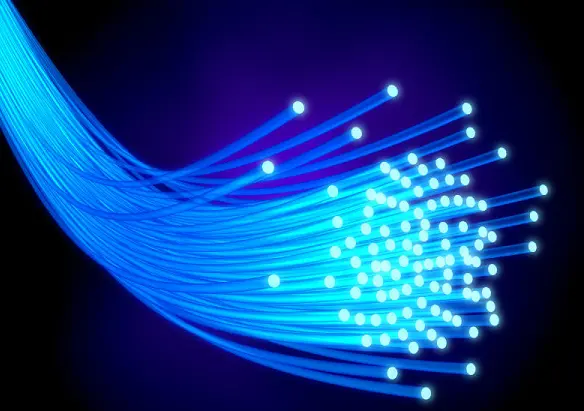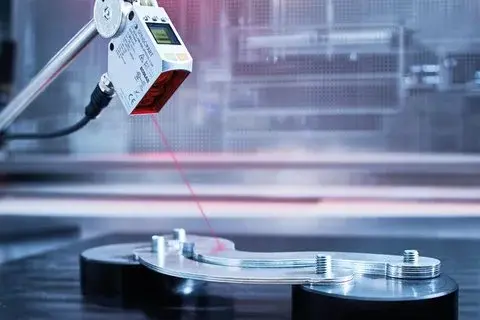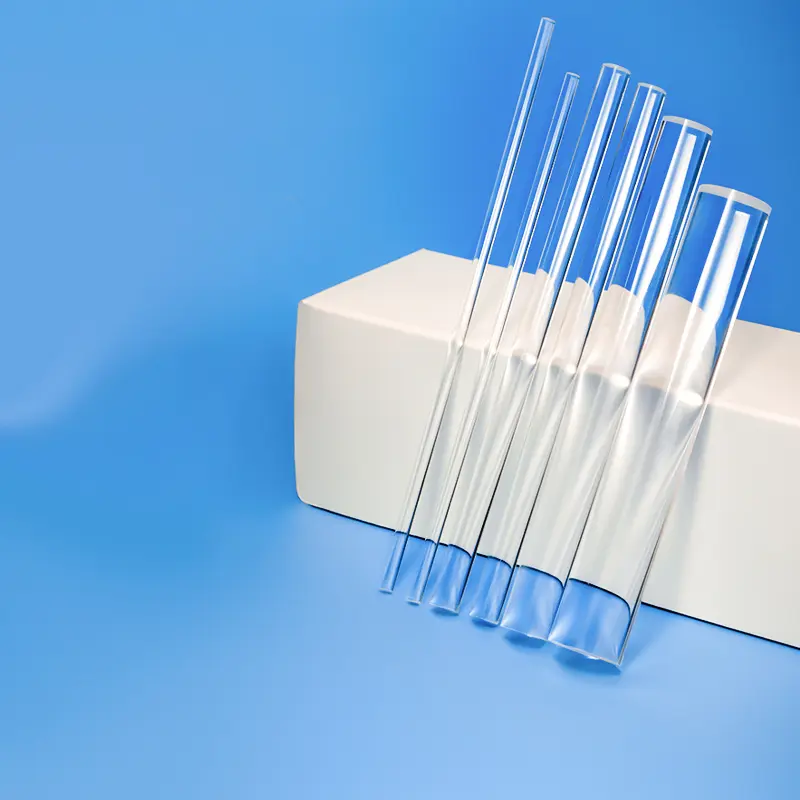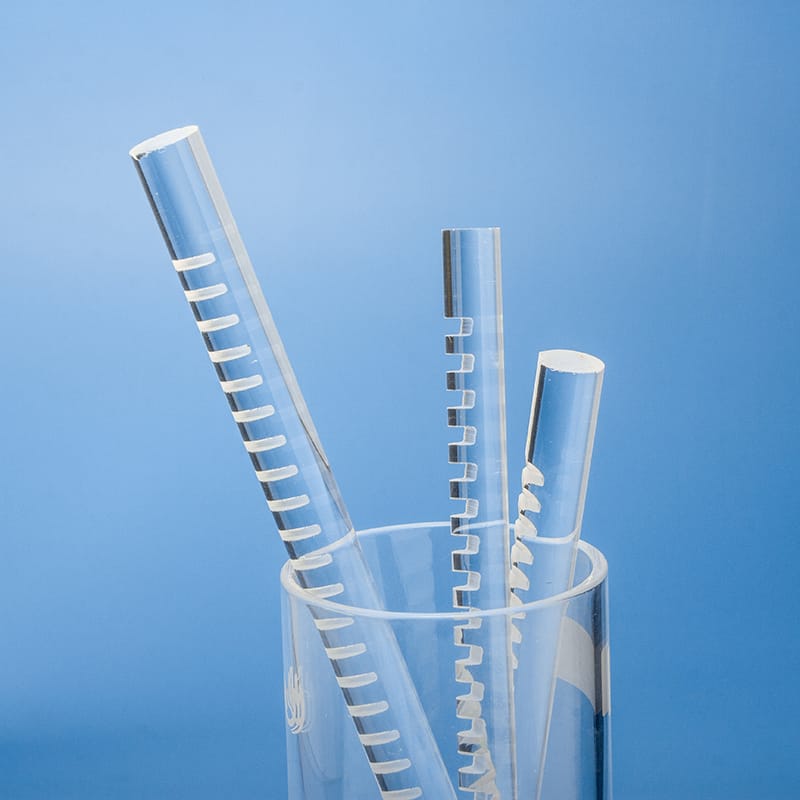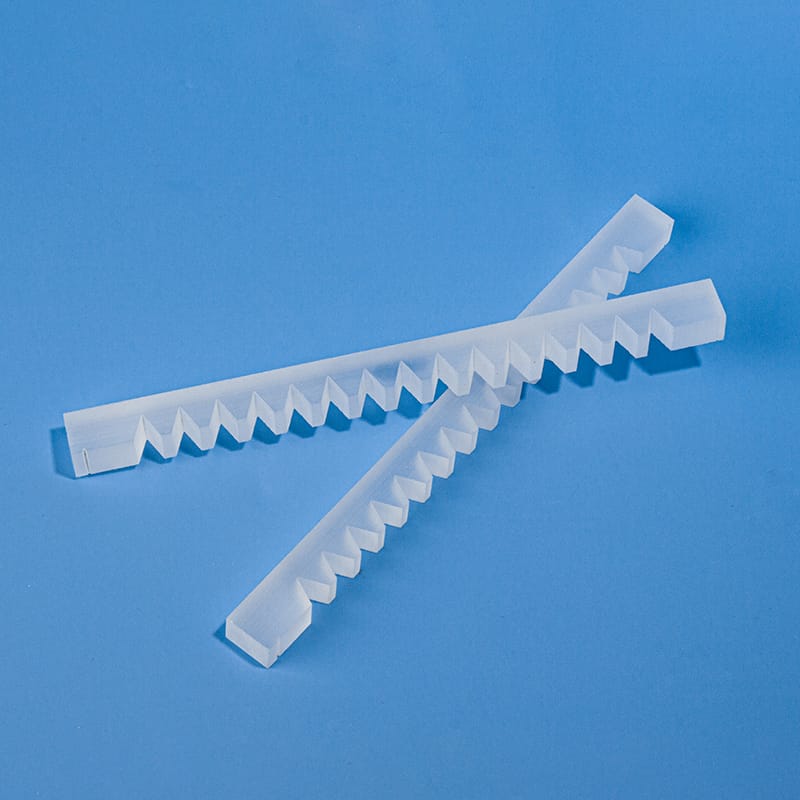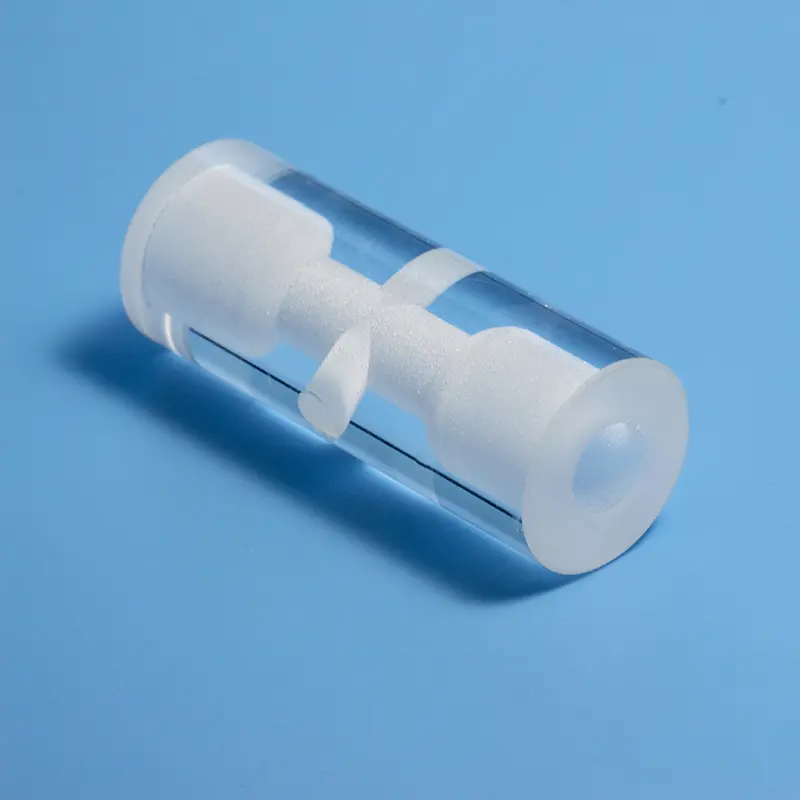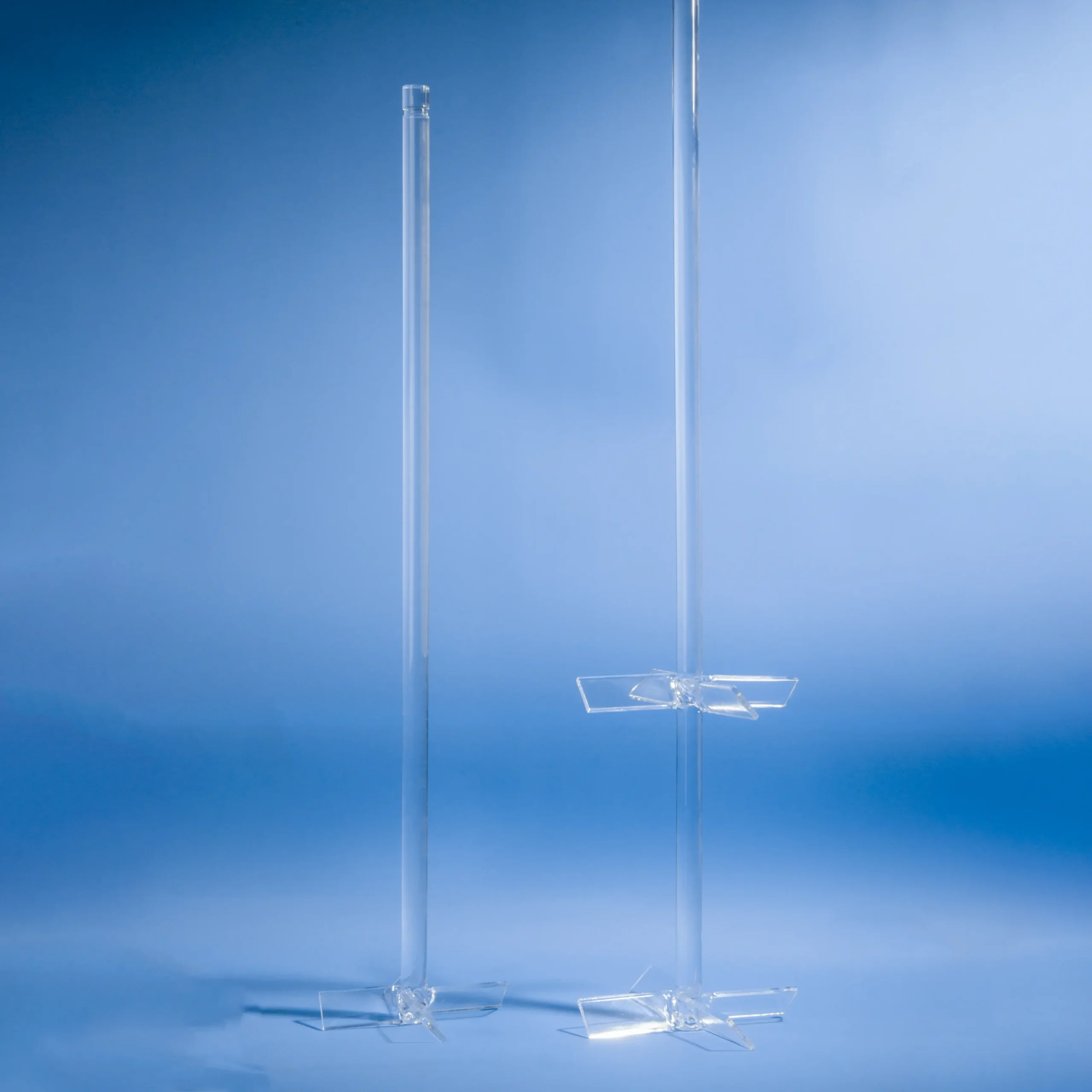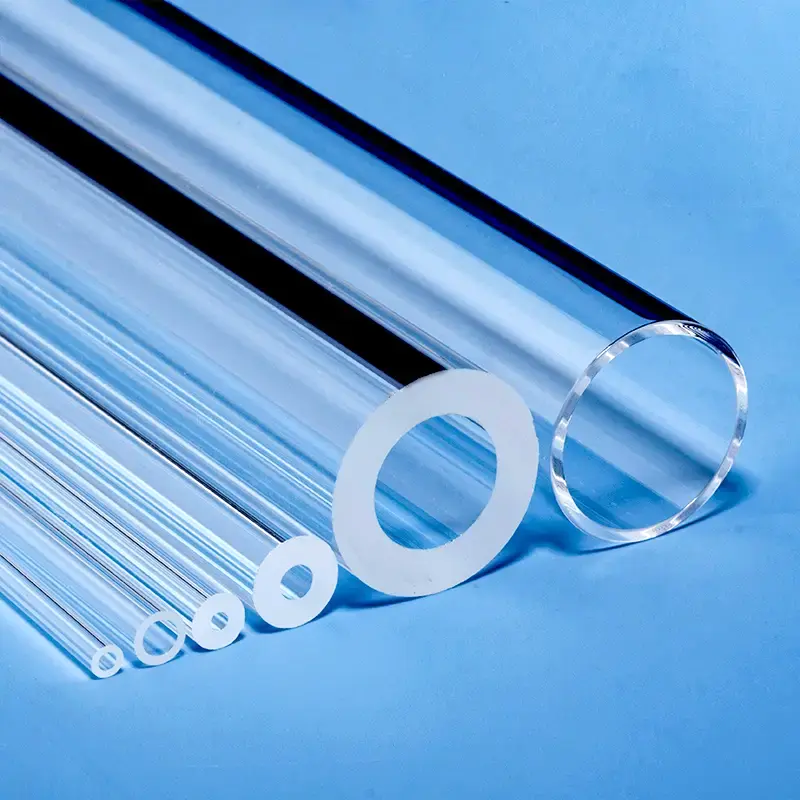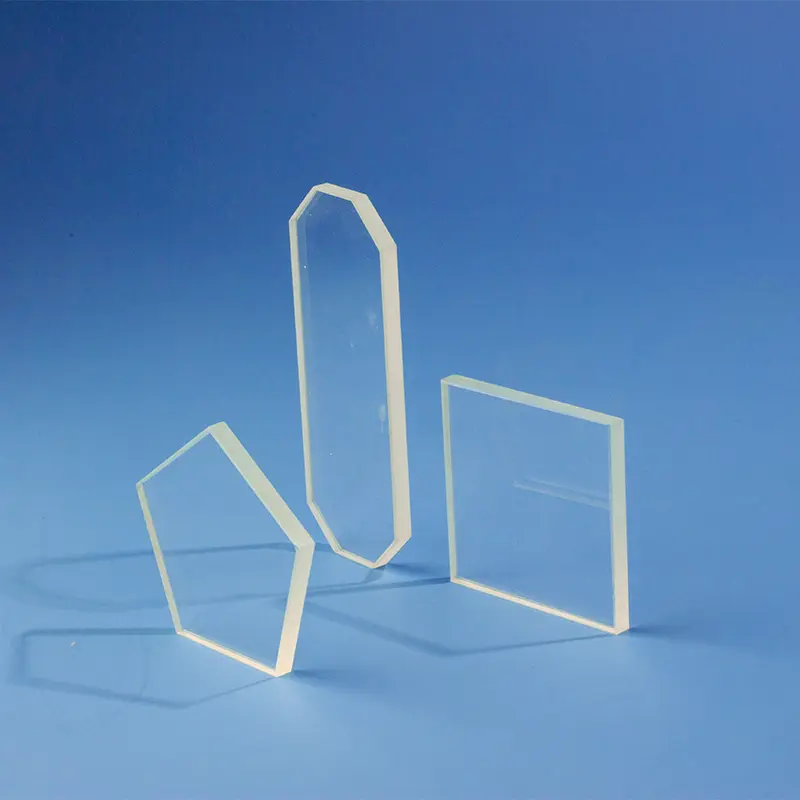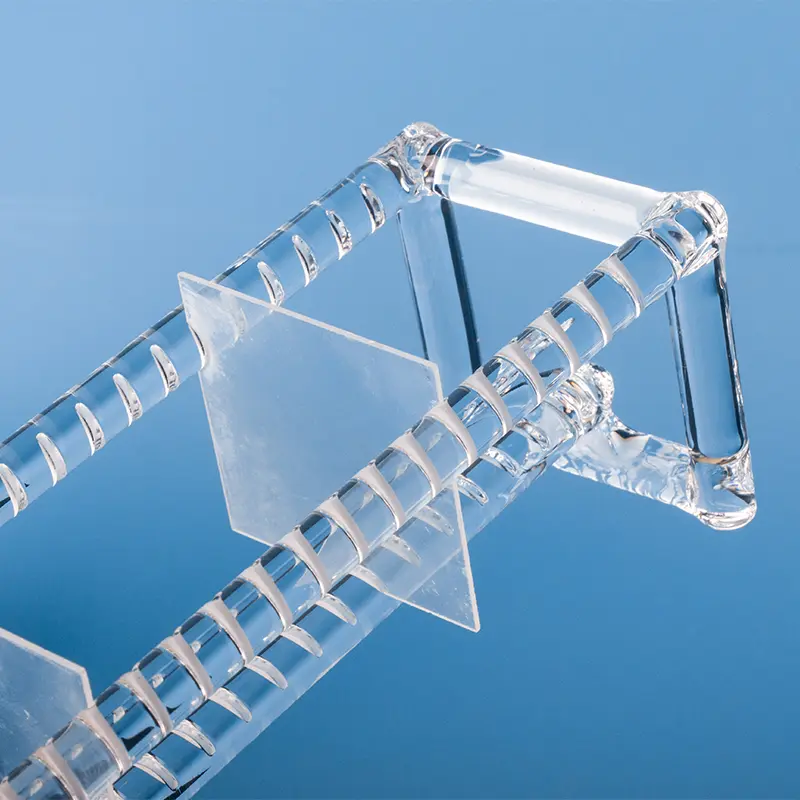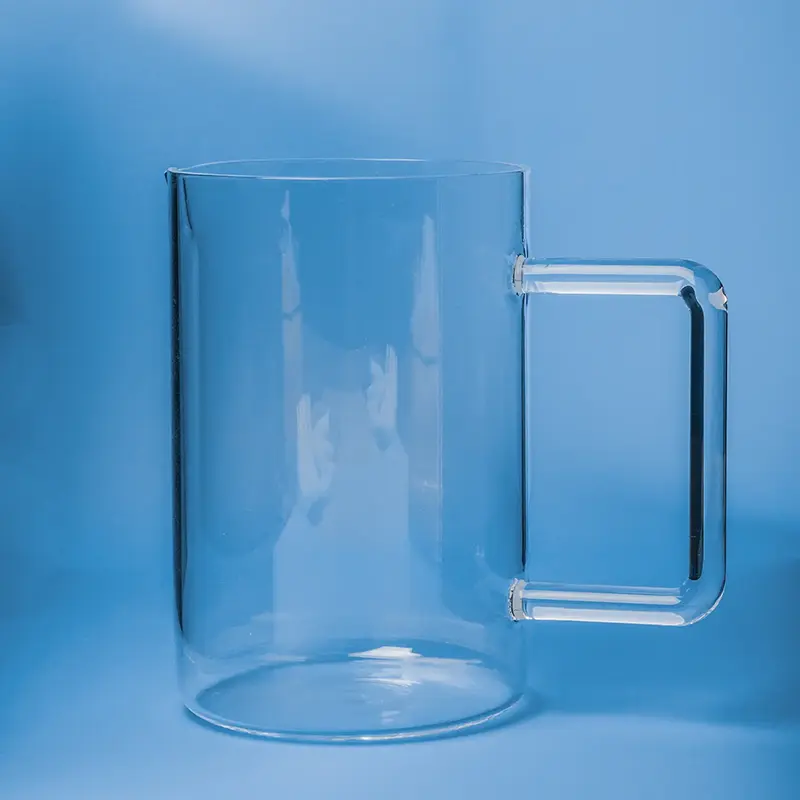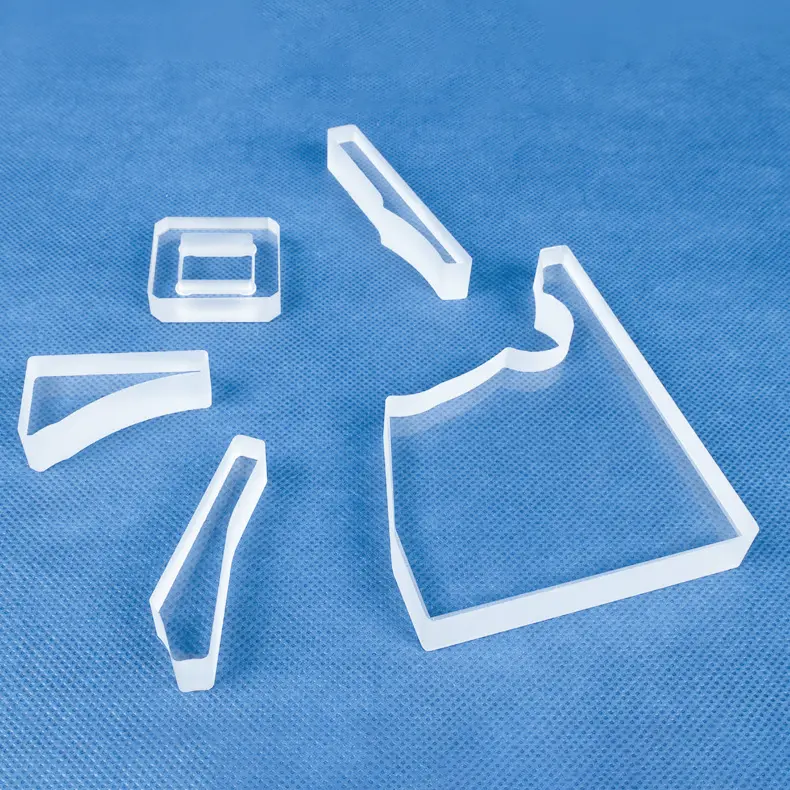Quartz light guide rods utilize the principle of total internal reflection for transmitting light signals. When light travels from an optically dense medium to an optically less dense medium, if the angle of incidence is greater than or equal to the critical angle, the light will be totally reflected back into the original medium, thereby achieving light transmission. Within a quartz light guide rod, light undergoes continuous total internal reflection at the inner walls of the rod, thereby traveling along the length of the rod towards the target location.
| diameter | length |
|---|---|
| 10mm | 300mm |
| 10mm | 600mm |
| 12mm | 300mm |
| 12mm | 600mm |
| 14mm | 300mm |
| 14mm | 600mm |
| 15mm | 300mm |
| 15mm | 600mm |
| 15mm | 1000mm |
| 16mm | 300mm |
| 16mm | 600mm |
| 16mm | 1000mm |
| 16mm | 1200mm |
| 18mm | 300mm |
| 18mm | 600mm |
| 18mm | 1000mm |
| 18mm | 1200mm |
| 20mm | 300mm |
| 20mm | 600mm |
| 20mm | 1000mm |
| 20mm | 1200mm |
| 22mm | 300mm |
| 22mm | 600mm |
| 22mm | 1000mm |
| 22mm | 1200mm |
| 25mm | 300mm |
| 25mm | 600mm |
| 25mm | 1000mm |
| 25mm | 1200mm |
| 28mm | 300mm |
| 28mm | 600mm |
| 28mm | 1000mm |
| 28mm | 1200mm |
| 30mm | 300mm |
| 30mm | 600mm |
| 30mm | 1000mm |
| 30mm | 1200mm |
| 32mm | 300mm |
| 32mm | 600mm |
| 32mm | 1000mm |
| 32mm | 1200mm |
| 35mm | 300mm |
| 35mm | 600mm |
| 35mm | 1000mm |
| 35mm | 1200mm |
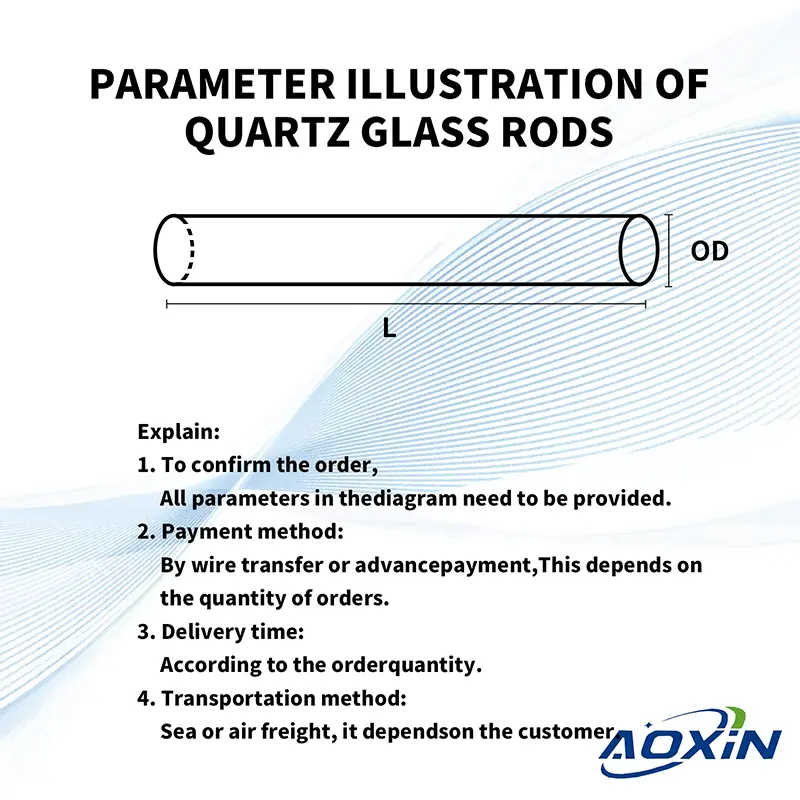
- Payment method:
By T/T or prepayment,
It depends on the quantity of the order. - Delivery time:
According to the order quantity. - Shipping method:
By sea or by air,
It depends on the customer.
Remarks:
To confirm the order,
the following parameters are required:
① outer diameter ② length ③ quantity
Fehler: Kontaktformular wurde nicht gefunden.
| Eigenschaft Inhalt | Immobilienwerte |
|---|---|
| SiO2 | 99.99% |
| Dichte | 2,2×10³ kg/cm³ |
| Härte | 5,5 - 6,5 Mohs'sche Skala 570 KHN 100 |
| Zugfestigkeit | 4,8×10⁷ Pa (N/mm2) (7000 psi) |
| Druckfestigkeit | >1,1×10⁹ Pa (160.000 psi) |
| Wärmeausdehnungskoeffizient | 5,5×10-⁷ cm/cm-°C (20°C-320°C) |
| Wärmeleitfähigkeit | 1,4 W/m-°C |
| Spezifische Wärme | 670 J/kg-°C |
| Erweichungspunkt | 1730°C (3146°F) |
| Glühpunkt | 1210°C (2210°F) |
| Dehnungspunkt | 1120°C (2048°F) |
| Arbeitstemperatur | 1200°C (2192°F) |
| Elektrischer spezifischer Widerstand | 7×10⁷ Ohm cm (350°C) |
| Größe | Kundenspezifisch |
| Logo | Kundenspezifisches Logo akzeptieren |

There are two primary methods for producing quartz rods: the continuous method and the flame fusion method (also known as the gas fusion method).
Continuous Method: In this method, quartz sand is fed from the top into a furnace, which comprises a metallic quartz crucible surrounded by electric heating elements. The quartz sand melts at high temperatures. The molten material then passes through a shaping orifice at the bottom of the crucible, producing rods, tubes, sheets, or other various specified product forms.
Flame Fusion Method: This method involves using hydrogen and oxygen to melt colorless quartz crystal. The molten material is formed into quartz glass through the melting and congealing of crystalline particles in the flame. The quartz glass is then removed from the flame through different methods and processed into quartz rods of the desired shape.
Hochtemperaturbeständigkeit
Quartz glass exhibits excellent high-temperature resistance, maintaining stability in high-temperature environments.
Low Thermal Expansion Coefficient
The thermal expansion coefficient of quartz glass is extremely low, ranging from 1/12 to 1/20 of that of ordinary glass, contributing to its stability under temperature variations.
Corrosion Resistance
Quartz glass is resistant to a variety of acids, bases, and salts, with the exception of hydrofluoric acid and hot phosphoric acid above 300 degrees Celsius.
High Light Transmission Rate
The light transmission rate can reach 99.9%, ensuring high transmittance of light signals during transmission.
Anwendungsszenario
Communication Field
In optical fiber communication systems, quartz light guide rods serve as a medium for transmitting light signals from the transmitter to the receiver, enabling high-speed and high-capacity data transmission.
They are also used in equipment such as lasers and optical amplifiers to enhance the performance and stability of communication systems.
Other Fields
In the biotechnology field, quartz light guide rods are used for fluorescence detection and analysis, allowing rapid and highly sensitive detection of biomolecules.
In laser processing, they are used for laser cutting and laser marking, characterized by high energy density, high precision, and high efficiency.
They are also used in the manufacturing of various optical instruments, such as microscopes, telescopes, and thermal imagers, transmitting light and changing its direction to achieve specific observational effects.
Quartz light guide rods exhibit excellent long-term stability in various environments. They possess a high degree of chemical stability, allowing them to maintain their performance and integrity in a wide range of chemical environments. Additionally, the thermal expansion coefficient of quartz glass is among the lowest of common industrial glasses, which means that it maintains good dimensional stability during temperature changes and is highly resistant to thermal shock.
Quartz light guide rods possess extremely high chemical stability and are nearly unreactive with most acidic and alkaline substances, except for hydrofluoric acid. This corrosion resistance makes them invaluable in environments where frequent contact with corrosive materials is common.
Quartz stirring rods offer superior high-temperature resistance and chemical stability compared to plastic stirring rods. Additionally, they possess high structural strength, are less prone to breakage, and have a long service life.
Häufig gestellte Fragen
Quarzglas ist ein hartes und sprödes Material mit ausgezeichneten physikalischen und chemischen Eigenschaften, extrem hoher mechanischer Härte, guter elektrischer Isolierung, hoher Temperatur- und Korrosionsbeständigkeit, geringer und stabiler Verzögerungsleistung, guter Lichtdurchlässigkeit usw. Es findet breite Anwendung in der Halbleiterindustrie, Optik, Elektrizität, Chemie, Luft- und Raumfahrt, Automobilindustrie und anderen Bereichen. Harte und spröde Werkstoffe sind schwer zu bearbeiten, und in vielen Bereichen werden dringend Schneidverfahren mit geringem Kanteneinbruch, geringem Materialverlust, geringer Querschnittsrauheit und einem großen Schnittdickenbereich benötigt. Das traditionelle Schneidverfahren für Quarzglas ist das mechanische Schneiden, d. h. das Scheibenschneiden. Zu den nicht-traditionellen Schneidverfahren gehören Wasserstrahlschneiden, elektrochemisches Drahterodieren, kontinuierliches Laserschneiden usw. Das mechanische Schneiden ist kostengünstig, aber der Kontakt zwischen der Scheibe und dem Material verursacht einen hohen Werkzeugverschleiß, und das Material wird leicht durch das Werkzeug verschmutzt. Quarzglas neigt zu Kanteneinbrüchen, Mikrorissen und Eigenspannungen, was die Festigkeit und Leistung des Materials beeinträchtigt! Das Schneiden von Kurven ist schwierig und erfordert Nachbearbeitungen wie Schleifen und Polieren. Das Laserschneiden kommt nicht direkt mit dem Material in Berührung, hat keine Kontaktspannungen und kann komplexe Kurvenschnitte durchführen. Der Pikosekundenlaser hat die Vorteile eines kleinen Punktdurchmessers, einer hohen Präzision, einer kurzen Einwirkungszeit auf das Material und eines kleinen Einwirkungsbereichs und eignet sich für die Bearbeitung von harten und spröden Materialien.
。


